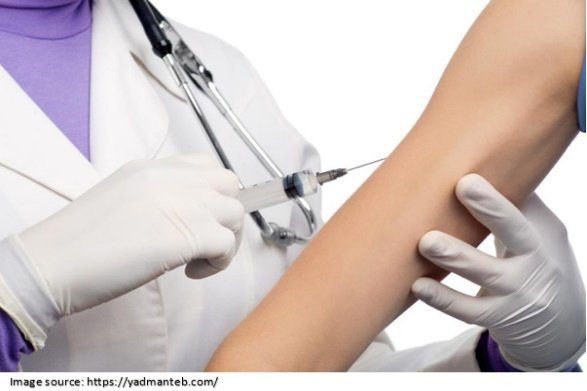Strokes occur when blood flow to the brain’s arteries is obstructed or (in more severe cases) leaks or bursts. Trauma to the brain and spinal cord from this can result in other symptoms.
Muscles may stiffen, tighten, and resist stretching after a stroke. This condition is referred to as spasticity. Muscle tone is related to spasticity. A muscle that resists stretching has a tone or a natural contraction.
Spasticity may result from an abnormal rise in muscle tone brought on by a stroke. The intensity of muscle contractions increases. This may lead to the contraction of one or a collection of muscles. 17% to 38% of stroke patients report spasticity. Between 40 to 78 percent of patients experience it after a spinal cord injury. Mild spasticity can cause muscle stiffness and tightness, while severe spasticity can result in painful, uncontrollable spasms in the extremities. Fortunately, there are several treatment options available to manage spasticity.
Dr. Gurneet Singh Sawhney offers the most-effective spasticity treatment in Mumbai after determining the type and severity of the condition. He is one of the best neurosurgeon in Mumbai, with immense expertise in handling stroke patients and efficiently managing the post-stroke effects on their bodies.

Please continue reading to learn more about post-stroke spasticity and treating it.
First, let’s discuss,
What is Post-stroke Spasticity?
A stroke can harm the area of the brain that regulates the signals to the muscles.You might then experience spasticity or an unusual rise in muscle tone. Your muscles may become painfully stiff, tight, and stressed, making it difficult for you to move freely.
The way you speak, move, and walk can also be impacted. Your muscles may stay contracted in specific positions, such as a clenched fist, tucking your thumb into the palm, or a bent wrist.
After a stroke, spasticity can also cause:
- Stiff fingers, arms, or legs
- Muscles that contract and relax on their own
- Painful contractions
- Muscle fatigue
- Long-term muscle and joint deformity
Younger stroke sufferers are more likely to experience spasticity. Bleed-related strokes also increase the risk of spasticity.
How is Spasticity Treated?
According to Dr. Gurneet Singh Sawhney, one of the top neurosurgeon in India, treatments and lifestyle modifications can help lessen the severity of spasticity and its impact on your life.
We have listed some of the typical spasticity treatments below:
Oral medications
- Your doctor may prescribe oral medications to block the neurotransmitters that lead to muscle tightening. These drugs are referred to as muscle relaxants. It is one way to relax spastic muscles.
- Often, doctors prescribe Baclofen since it works on the central nervous system to reduce spasms and improve the range of motion. Tizanidine is another effective drug for treating spasticity that blocks nerve impulses.
- There are some drawbacks to treating spasticity with oral medications. One is that it is difficult to target specific muscles. Whether your muscles are spastic or not, muscle relaxants will relax all of your muscles.Drowsiness is one of these medications’ side effects.
- The most important thing to remember is that none of these drugs can treat spasticity. Combining them with strengthening and flexibility exercises maximizes their effectiveness.

Injections
- Taking injectable medications enables the affected muscles to be specifically targeted instead of taking oral medications that affect every muscle.
- The most popular drug administered intravenously is Botulinum toxin, also known as Botox. Botox is not just a cosmetic procedure to reverse the signs of aging. It is a neurotoxin that blocks the chemical which signals your muscles to contract.
- The risk of spasms and spasticity is decreased by injecting Botox into the affected muscles. A patient may engage in physiotherapy and perform recovery exercises by having their muscles’ spasticity reduced.
- Some temporary side effects of Botox include soreness, rash, difficulty swallowing, and weak muscles.
Stretching exercises
- The simplest and most crucial step to manage and recover from spasticity is to perform stretching exercises. If your spasticity is severe and you cannot complete the exercises without additional interventions.
- These exercises are frequently combined with other treatments like medication and orthoses. You might be able to perform stretches on your own if you have mild to moderate spasticity.
How long can stroke spasticity last, and does it ever go away?
- According to research, spasticity often occurs between 3 to 6 weeks after a stroke. It has been observed that muscular spasticity symptoms get worse six months after a stroke.
- If left untreated, spasticity can shrink and contract the muscles and joints permanently, locking them in place.
- Although there is no exact treatment for post-stroke spasticity, certain medications and lifestyle modifications can help lessen symptoms and maintain your range of motion.
Post-stroke spasticity symptoms can be controlled, and your quality of life can be improved by engaging in regular exercises, occupational therapy, and mobility aids.
We can also prevent spasticity-related long-term damage with the aid of treatments. Consult one of the top spasticity treatment specialist in Mumbai, like Dr. Gurneet Singh Sawhney, to avail the most-effective treatment.
FAQ
Does spasticity after stroke go away?
Spasticity and weakness (spastic paresis) are the most common motor impairments following a stroke and offer considerable therapy and patient care challenges. Spasticity develops and disappears during whole motor recovery.
What are the best exercises for spasticity?
8 Exercises for Spasticity After a Stroke
- Shifting your weight.
- Shoulder blade protraction.
- Ball squeeze.
- Ball pinch.
- Wrist curl.
- Supported reach and grasp.
- Side lying hip flexion.
- Knee extensions.
Is walking good for spasticity
Exercise is a great treatment for spasticity because it sparks neuroplasticity and helps repair the communication between the brain and muscles
Is massage good for spasticity?
Spasticity — Massage can help relax muscles and enhance range of motion exercises. Pain — Massage is useful in any condition in which a reduction in swelling or mobilization of tissues leads to pain relief
